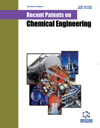Recent Patents on Chemical Engineering - Volume 4, Issue 3, 2011
Volume 4, Issue 3, 2011
-
-
Recent Developments of Supercritical Water Oxidation: A Patents Review
More LessAuthors: Angel Martin, Maria Dolores Bermejo and Maria Jose CoceroSupercritical Water Oxidation is a technique for the complete oxidation of organic wastes, based on the physical properties of water in supercritical conditions: complete miscibility with organics and with oxygen. This technology allows very high efficiency of oxidation to be achieved with very short residence times in the reactor (< 5 min) and a single- step treatment process. However, there are also some limitations for the application of this technology, particularly for the treatment of feeds with high concentrations of salts that can precipitate and clog the equipment, or in the treatment of highly corrosive materials. In this review, several patents are presented which describe inventions for dealing with these difficulties, including new reactor designs, construction materials or operation methods. Additionally, the peculiarities of SCWO treatment can be exploited to develop new processes with economic advantages such as the production of energy or the recovery of precious materials from wastes.
-
-
-
A Review of Patents on Energy Efficiency Based on Sector Classification and Energy Form Conserved
More LessAuthors: Ashok Kumar, Naveen Pinapatruni and Akhil KadiyalaThe present review provides an overview of patents on existing energy efficient techniques and forms of energy conserved in the industrial, residential, commercial, and transportation sectors. The patents cover novel techniques and alternative methods toward better technology. The majority of the patents related to better energy efficiency are found in the industrial sector. A trend study on the number of patents issued related to energy efficiency and the energy form conserved, in the above-mentioned sectors, showed a gradual increase from 1989 that peaked between 2000 and 2009. This study also shows that significant research efforts are being done toward achieving the goal of sustainable energy-efficient technologies and products.
-
-
-
PEGylation: An Overview and Recent Advances Reported in the Patent Literature
More LessAuthors: Marianela Gonzalez, Santiago E. Vaillard and Ricardo J. GrauPegylation technologies have improved since chemistry and purification processes have advanced over the years. Furthermore, a gradual better understanding of the clinical responses has spurred the need for more effective therapeutic agents. Nowadays, it is necessary to early identify therapy needs and technical capabilities to develop customized, innovative products that reach the market successfully. Consequently, the main technical efforts are directed to solve some intricate problems associated with the drug delivery where improved solubility, in vivo stability, targeted delivery, and enhanced efficacy and safety are the major challenges. Too many alternative approaches for too many needs open up the possibility for follow-on developers and competitors, and provide opportunities for innovation that provoke an intense worldwide competition in a complex intellectual property environment. This paper presents an overview of general trends and patents supporting PEGylation platforms. Since the golden rule is that PEGylation has to be tailored to each specific drug and application, the review format is structured by specific conjugated species alphabetically sorted within the following groups: PEG-protein conjugates, PEG-antibody and antibody fragment conjugates, PEG-oligonucleotide conjugates, PEG-small molecule drug conjugates, and PEGylated materials and miscellaneous applications.
-
-
-
Patent Review on “Biodiesel Production Process”
More LessThe development of technology for biodiesel production is one of the attractive and challenging issues due to its possibility for commercial usage. Many patents have been investigated and proposed the intensification technology in order to improve and enhance the performance of biodiesel production process. In general, the invention topics mostly include feedstock materials, reactions, pretreatment technique, reactor/separation/purification technology and quality improvement. Therefore, this patent review summarizes the potential technology, development for biodiesel production presented in the mentioned topic and aims to keep the overview knowledge of the production process. Moreover, this review offers more clear comprehension and provides a guideline for further invention of any technologies for biodiesel production.
-
-
-
A Review on Recent Patents on Chemical and Calcium Looping Processes
More LessAuthors: F. Gallucci and M. van Sint AnnalandChemical and calcium looping processes are interesting concepts for power production with integrated CO2 capture. In this review, recent patents on both chemical and calcium looping processes are discussed after an introduction to the carbon capture and sequestration problem. Novel process concepts on chemical looping and calcium looping are described in detail. Chemical looping combustion is mainly considered as an alternative to oxy-fuel processes, while calcium looping can be applied to retrofit existing power plants or for novel plants based on the reforming of fossil fuels to hydrogen. As such calcium looping processes are foreseen to be applied first in industry. Most of the patents deal with interconnected fluidized bed systems, while also alternative concepts are discussed in this review.
-
-
-
The Summary of the Scale and the Methods to Inhibit and Remove Scale Formation in the Oil Well and the Gathering Line
More LessAuthors: Guolin Jing and Shan TangReducing scale formation in an oil well, airtight gathering and transportation system presents a challenge for oil and gas production. This paper focused on the scaling phenomena in hydrocarbon production and reviewed on patents of scale removal technology and scale inhibition technology. The disadvantage and the mechanism of the scale formation were discussed, and the methods to solve this problem were summarized. The role of the green additive in affecting the scaling was discussed in relation to the principal mechanisms by which the inhibitors function.
-
-
-
Patent Selections
More LessThe patents annotated in this section have been selected from various patent databases. These recent patents are relevant to the articles published in this journal issue, categorized by medical imaging, bioinformatics, image processing, biomaterials, Pharmaceutical drugs, bioengineering, medical devices, design, biological devices, biomechanics & diagnostic devices related to biomedical engineering.
-
Most Read This Month


